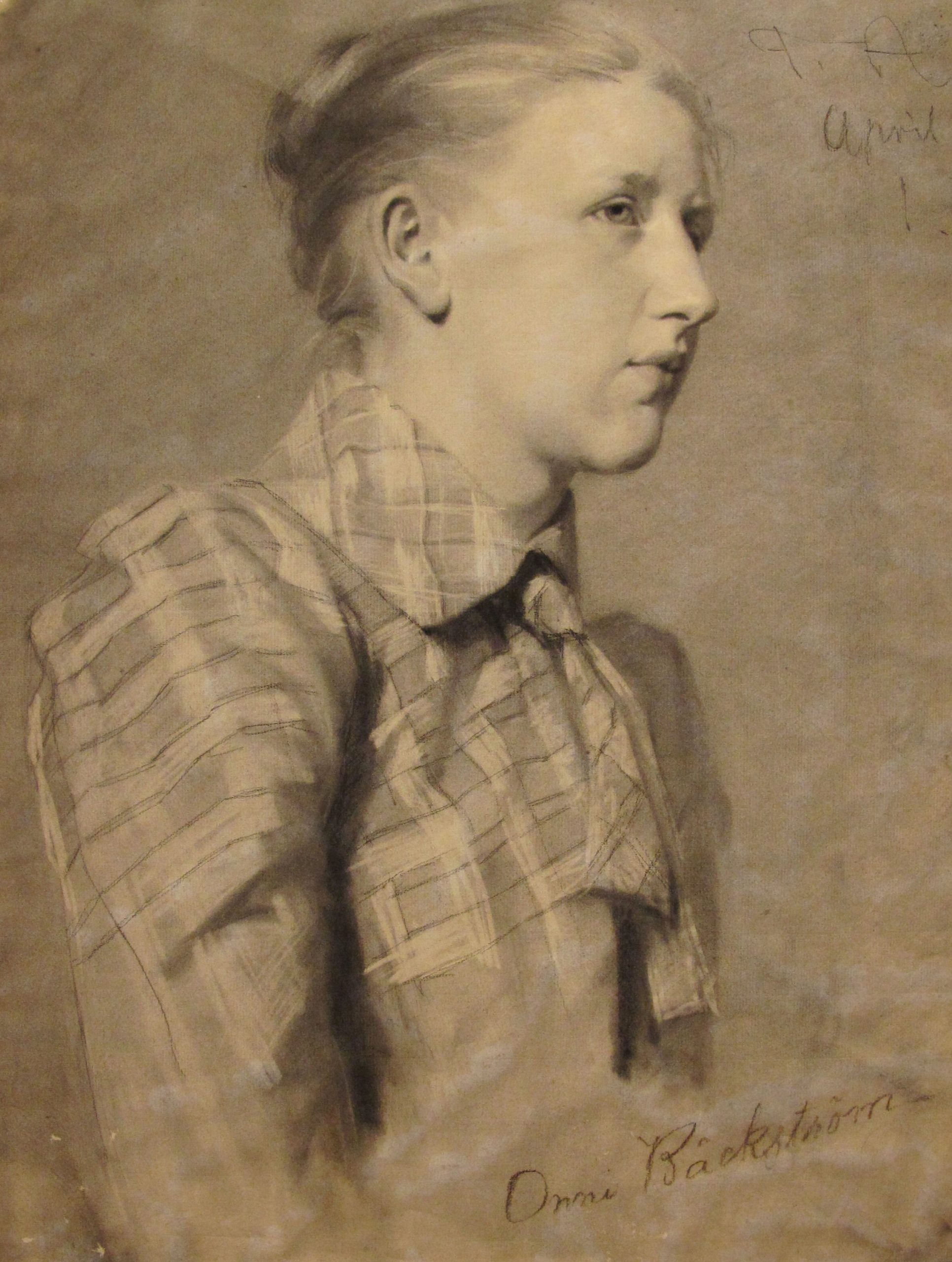The University of Helsinki Art Room holds an impressive collection of drawings, but the identity of some of the artists is not known. The signatures, if any, may be unclear, and notes made on the drawings may sometimes be misleading.
As I was cataloguing the drawings in our database and conducting online searches to establish the identity of the artists, I came across a skilled drawing entitled Portrait of a Young Woman, which showed the profile of a woman, from a slightly downward angle, with her hair in a bun and wearing a check shirt. At the bottom of the paper was the name Onni Bäckström, while at the top were the initials F. A. followed by ‘April 93’. Based on what I saw, I immediately assumed that the artist was a male student called Onni Bäckström. The initials at the top were of the person who had approved the work: Fredrik Ahlstedt, a teacher at the Art Room.



